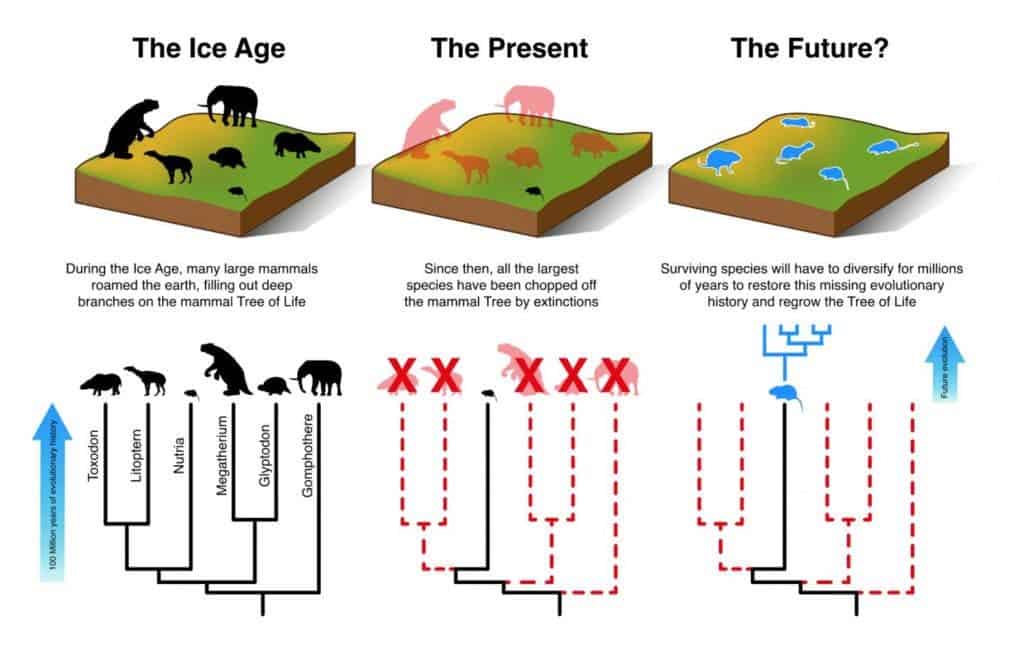
How small mammals need to evolve in order to diversify and make up for the loss of large mammals. Credit: Matt Davis, Aarhus University.
In the past half-billion years, there have been five major mass extinction events that annihilated most of life on Earth. The Permian-Triassic extinction, for instance, took place about 250 million years ago at the end of the Permian period and wiped out 96% of all marine species and over three-quarters of land vertebrates. The latest mass extinction, the Cretaceous-Tertiary extinction, killed off the dinosaurs about 65 million years ago. Scientists now argue that we’re the brink of a sixth mass extinction — but while previous events were triggered by calamities, such as massive volcanic eruptions or an asteroid impact, this time the vector is a single species: Homo sapiens.
Given the current rate at which humans are exterminating animal and plant species, researchers at the Aarhus University and the University of Gothenburg calculated how long would it take for biodiversity to recover. Even in an optimistic scenario, where conservation efforts manage to halt habitat destruction and reduce extinction rates back to background levels seen in fossils, it will take mammals 3-5 million years to regenerate the evolutionary branches that they will lose in the next 50 years. It will take more than 5 million years to regenerate the biodiversity that was lost from giant Ice Age species.
Save biodiversity before it’s too late
The team of researchers used an extensive database of mammals that includes not only existing species but also those that went extinct since Homo sapiens expanded across the globe.
Every species that went extinct because of us represents a tragedy. But the ecological value of some of these species is greater than others. There are hundreds of species of shrew, so if it loses a few, the lineage still has enough members to breed biodiversity. That’s not the case for some megafauna species such as giant sloths and sabre-toothed tigers, which used to be highly evolutionary distinct and went extinct 10,000 years ago, with humans playing a major role. When these distinct lineages disappeared, entire branches of the evolutionary tree of life collapsed.
In order to establish the time required for mammalian species to recover to biodiversity levels seen before humans entered the big picture, the researchers performed advanced evolutionary simulations on powerful computers.
They inspected several scenarios, modeling the complex evolutionary relationships between existing and extinct mammals, finding that even under the most optimistic scenario, it would still take up to five million years for the mammalian life to regenerate its lost branches and twigs of the evolutionary tree.
According to the study published in Proceedings of the National Academy of Sciences, iconic species such as the black rhino could become extinct within the next 50 years, while Asian elephants have only a 33% chance of surviving past this century.
“Although we once lived in a world of giants: giant beavers, giant armadillos, giant deer, etc., we now live in a world that is becoming increasingly impoverished of large wild mammalian species. The few remaining giants, such as rhinos and elephants, are in danger of being wiped out very rapidly,” says Professor Jens-Christian Svenning from Aarhus University, who heads a large research program on megafauna, which includes the study.
The findings make a case for strengthening conservation efforts now because simple math dictates that it’s much easier to save biodiversity than to wait for it to evolve later.









